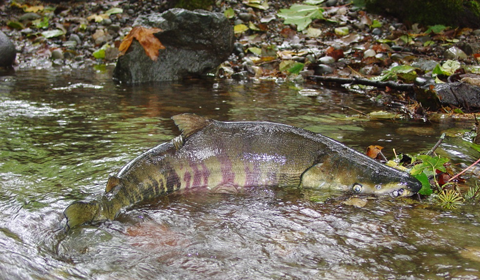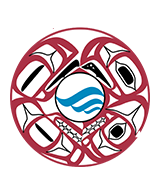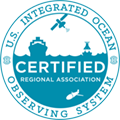Fisheries & Marine Life
Fishing and utilizing the marine waters for sustenance has a long history along the coast of Washington, Oregon and Northern California., and within the inland marine waters of the Salish Sea. Coastal and Salish Sea native tribes in the region relied on fish and shellfish for food since their beginnings. In the early 1800’s commercial salmon fishing by non-natives began on the Columbia River. The early economies of Oregon, Washington, and N. California were built on fishing, along with logging and farming, which continues to be important industries to this day. Fish and fishing are an important part of the regional economy, cultural identity, and environmental system that needs protecting. Tribal and state governments now work together to monitor the recruitment, return and harvest of salmon and shellfish.

Areas of Emphasis
Maritime Operations |
Coastal Hazards |
Fisheries & Marine Life |
Marine Ecosystems |
Weather & Climate |
Related Topics
Harmful Algal Blooms
Ocean Acidification
Coastal and Estuarine Hypoxia
Coastal & Marine Spatial Planning
Related NANOOS Products
Forecast Information and Data Products for Fishers
Information and data products oriented towards commercial and recreational albacore tuna fishing communities.
Puget Sound Networked Profiling Buoy
Data from a profiling buoy located at Point Wells (north of Seattle). The sensor package measures a depth profile of oceanographic variables every hour from the sea surface to the sea bed.
Puget Sound ORCA
Oceanic Remote Chemical Analyzer (ORCA) measures physical, chemical, and biological water characteristics in Hood Canal.
Water Quality Data for Shellfish Growers
Real-time Water Quality Data for Shellfish Growers. A pilot project between NANOOS and the National Estuarine Research Reserve System.
CMOP/NANOOS Phoebe Glider (Quinault) Transect
Research mission is to support sustained characterization of events and gradient regions in the Washington shelf, with focus on the Grays Harbor line, and help enhance models.
NANOOS members involved in this effort include:
Northwest Indian Fisheries Commission
Oregon Health and Science University
King County Dept. of Natural Resources and Park
NOAA Northwest Fisheries Science Center
NOAA Olympic Coast National Marine Sanctuary
Oregon Dept. of Fish and Wildlife
Washington Dept. of Fish and Wildlife
Hood Canal Salmon Enhancement Group
Pacific Northwest Salmon Center
Columbia River Crab Fisherman's Association
| National Observing System Partners Alliance for Coastal Technologies (ACT) Southeastern Universities Research Association (SURA) Integrated Ocean Observing System IOOS | |||||||

